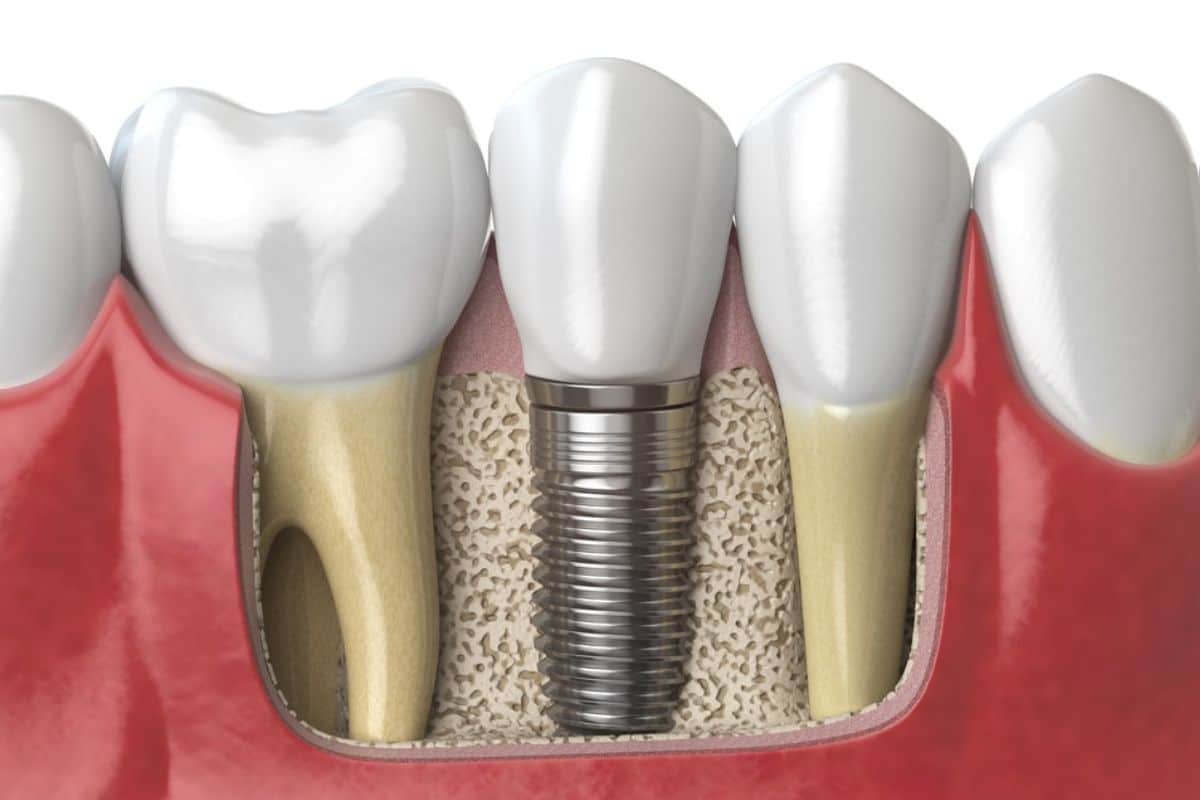Tooth loss is more than a cosmetic concern. It impacts chewing, speech, and confidence—but perhaps the most overlooked effect is on the jawbone. Without stimulation from teeth, the bone begins to shrink, leading to long-term oral health problems. While dentures and bridges replace missing teeth above the gumline, they do little to protect the bone beneath. Implant dentistry, however, offers a unique benefit: preserving bone health through direct integration with the jaw. The question is, are patients missing out on these benefits by ignoring implants?
Why Tooth Loss Impacts More Than Just a Smile
Hidden Problem – The Jaw Weakens Without Stimulation
Tooth loss affects far more than appearance. When natural teeth are gone, the jawbone loses stimulation. This sets off a process known as bone resorption, where the bone slowly shrinks and loses density. Over time, this can make the face look sunken, cause difficulty with chewing, and reduce support for remaining teeth. Traditional dentures and bridges only replace what’s visible—they do not reach beneath the gumline to protect the bone.
Better Answer – Implants Work Like Real Tooth Roots
Implant dentistry provides a solution that goes deeper. A dental implant acts like an artificial tooth root, fusing with the jawbone through osseointegration. This process stimulates the bone, preventing shrinkage and keeping it strong. With implants, patients don’t just replace missing teeth—they also protect the oral foundation that supports long-term health.
Beyond Filling Gaps: Protecting Oral Foundations
Problem – Traditional Restorations Ignore the Jaw
Dentures sit on top of the gums, while bridges are supported by neighboring teeth. Neither restores the lost connection to the bone. This leaves the jaw vulnerable to ongoing deterioration, which can impact bite alignment and lead to more tooth loss over time.
Solution – Implant-Supported Restorations Add Strength
Implant-supported crowns, bridges, or dentures go beyond surface-level replacements. Because they are anchored directly into the jawbone with titanium posts, they restore both appearance and structure. This anchoring effect provides stability while also preventing the bone from weakening—a double benefit traditional options cannot match.
Facial Appearance and Aging Concerns
Problem – Bone Shrinkage Alters the Face
As bone shrinks, the cheeks sag, the lips lose support, and the jawline weakens. This can cause a prematurely aged look, even in younger patients. People relying only on dentures often notice their dentures fitting poorly over time as bone continues to change shape.
Solution – Implants Maintain Natural Structure
By stimulating the jawbone, implants prevent collapse and preserve facial shape. Patients benefit from not just restored teeth but also a youthful facial appearance. Protecting bone health is as much about confidence and aesthetics as it is about function.
Stability That Changes Everyday Living
Problem – Dentures Cause Slipping and Discomfort
Traditional dentures often rely on suction, clasps, or adhesives to stay in place. But as the jawbone changes, dentures loosen, leading to sore spots, awkward slipping, and trouble eating firm foods. Many patients avoid social gatherings or favorite meals out of embarrassment.
Solution – Implant Anchors Create Security
Implant-supported dentures snap securely into place, eliminating slipping and discomfort. Patients regain the ability to enjoy foods like steak, apples, or corn on the cob—meals that were once nearly impossible. They can also speak with clarity and confidence, knowing their dentures won’t move mid-conversation.
Rethinking Costs and Long-Term Value
Problem – Initial Price Creates Hesitation
One of the biggest concerns patients express about dental implants is the upfront cost. Implants generally cost more at the start compared to bridges or dentures, making them seem out of reach for some.
Solution – Durability Brings Greater Value Over Time
What many overlook is that implants are designed to last decades. Dentures often need replacing every 5–7 years, while bridges typically last 10–15 years. Over a lifetime, repeated replacements, repairs, and adhesive costs add up. By investing in implants, patients avoid many of these recurring expenses, making implants more cost-effective long term.
Easy Care, Lasting Results
Problem – Fear of Complicated Upkeep
Some patients hesitate to choose implants because they believe they require complex care or specialized cleaning routines.
Solution – Simple Daily Care Keeps Implants Healthy
Implants are maintained almost exactly like natural teeth: brushing twice a day, flossing, and routine dental visits. Unlike dentures, there’s no need for adhesives or frequent refittings. With consistent care, implants remain stable and strong, supporting both oral and bone health.
Quality of Life Beyond Oral Health
Problem – Insecure Restorations Lower Confidence
Dentures that slip or bridges that wear down can make patients feel older than they are. This impacts social confidence and sometimes even leads to isolation or avoiding public interactions.
Solution – Implants Restore Confidence and Comfort
Implants provide a natural look and feel. They don’t shift when laughing, speaking, or eating, which allows patients to smile more freely and enjoy everyday life without worry. Beyond restoring oral function, implants give patients back their self-esteem and independence.
Final Thoughts
Ignoring implant dentistry often means missing out on one of its most important advantages: protecting the jawbone. While bridges and dentures restore function above the gums, they cannot prevent bone shrinkage. Dental implants, however, fuse with the jawbone, preserving both structure and health.
The decision isn’t just about replacing teeth—it’s about maintaining the very foundation of oral health. For patients seeking long-term stability, comfort, and confidence, implants aren’t just a treatment option. They are an investment in bone strength, facial structure, and lasting quality of life.

